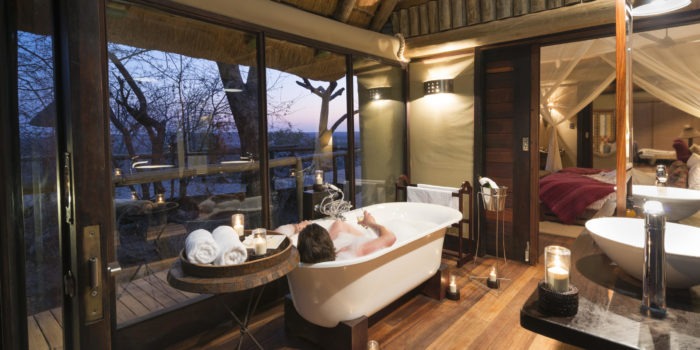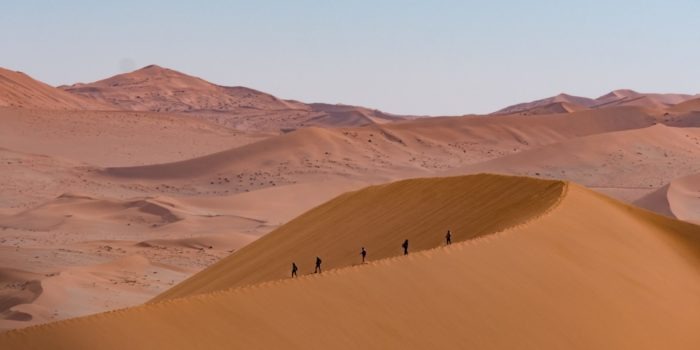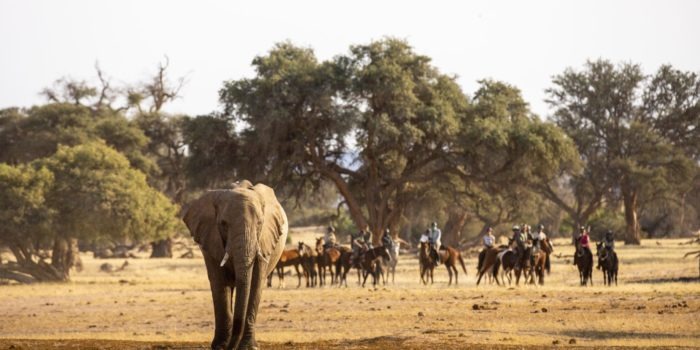



Why we like it
- Explore a raw, rugged and impossibly remote slice of African wilderness.
- Some of the most unique and dramatic accommodation on the continent- not many can say they’ve slept in a shipwreck after all!
- Explore the dry riverbeds, starting with a sunrise breakfast overlooking the incredible landscape and ending with a climb to the top of the great roaring dunes.
- Learn about the history behind the dramatic shipwrecks that line the mist-enshrouded coastline.
- Look for tok-tokkie beetles and the unusual plants and lichens that survive in the cold fog that rolls off the ocean.
- Combine a stay with Hoanib Valley Camp and enjoy a one-of-a-kind transfer drive through the changing scenery and dramatic landscapes.
The words ‘eerie’ and ‘mysterious’ are often bandied around when it comes to describing Africa’s most interesting locations, but the Skeleton Coast has to be one place that truly deserves the metaphors. Shrouded in mist, the jaw-droppingly beautiful National Park begins at the Uqab River and runs roughly 500 kilometres up the Atlantic Coast to the Kunene River.
Described by the San Bushmen as ‘the Land God Made in Anger’, the beaches are strewn with bleached whale bones and the wrecks of over a thousand ships, and the interior is an uninhabited desert of rolling, endless sand. But it’s magical and hauntingly picturesque, and, in our book, that makes it an absolute must-see.

Shipwreck Lodge itself is located in an unrivalled spot in the Skeleton Coast Central Concession Area, a piece of land between the Hoarusib and Hoanib rivers. The lodge is within the Skeleton Coast National Park and roughly 45 kilometres from Mowe Bay. The area contains irreplaceable and vulnerable wildlife habitat for species of the highest conservation importance, including elephant and the elusive brown hyena. Importantly, it also hosts the only other viable lion population in Namibia outside of Etosha National Park.
Uniquely designed around the enigmatic shipwrecks that line Namibia’s Skeleton Coast, there’s nowhere on the continent quite like Shipwreck Lodge. In fact, there’s nowhere on the continent quite like the Skeleton Coast. It’s a raw, rugged and impossibly remote slice of African wilderness, where towering dunes and wind-swept plains roll as far as the eye can see, buffeted by the icy Atlantic seas.However there’s so much more to the area than simple isolation!
Stay at Shipwreck Lodge and game drive in search of desert-dwelling fauna; discover the enchanting desert flora (succulents and lichens); sit atop the dunes as the sun sinks below the horizon; spend the day beachcombing for whale bones and debris from centuries of shipwrecks; and marvel at the geologically remarkable Clay Castles. Really, there’s nowhere like it on earth!
The owners felt it only fair to build a camp to match the remarkable scenery of the Skeleton Coast, and each of the 10 rooms have been constructed to resemble the shipwrecks that line the beach. There are eight twin or double rooms, and two cabins can take extra beds if you’re bringing the kids, all ensuite and solar-powered. Well, apart from the wood burning stove but on the chilly evenings and mornings, it’s most definitely a welcome addition!
In the centre of camp, you’ll find an equally as innovatively designed lounge and restaurant with a wide, wraparound deck and uninterrupted views across the sand all the way to the Atlantic Ocean, just magic!
The Skeleton Coast is an excellent year-round destination, and it stays relatively cool throughout the year – that’ll be that eerie Atlantic fog. But the desert temperatures can change at the drop of a hat, going from freezing to boiling in a matter of minutes, and you should always travel with a warm jumper (or two).
Activities include:
- Day excursions to the Mowe Bay seal colony, with stops at the Suiderkus and Karimona shipwrecks, Westies Diamond Mine and the remains of the Ventura Bomber.
- Sundowners drives to the roaring dunes.
- Quad biking (mornings only; aged 16 and over) and sand boarding across the dunes. We recommend pre-booking the quad biking activity in advance.
- 4×4 drives along the Hoarusib River, including the Clay Castles and the chance to spot some of the unique, desert-adapted wildlife.
- Beach lunch (weather permitting).
The Skeleton Coast is an area known for its extraordinary landscapes and wildlife sightings are rare – but when do you spot something, it’s a magical experience. First up are the desert-adapted elephant, digging deep beneath the sand for the last vestiges of water. Then, making use of the wells left behind by the pachyderms are giraffe, lion and baboon, and perhaps even a brown hyaena or two, but sightings are rare.
There are also thousands of plants and insects that flourish in the sand, surviving from the moisture of the cold fog that drifts inland from the ocean. Incredible stuff – but that’s not all.
Marine life positively thrives, feeding off the nutrients in the Atlantic, and the most iconic species are the Cape fur seals that line the rocky shoreline in large colonies. Birdlife is also prolific and you should most certainly pack your binos for Rüppell’s korhaans and Benguela long-billed larks. Further toward the coast, you should also be able to spot tractrac chats, as well as jaegers and skuas around the seal colonies.
All in all a magical experience, not like anywhere else in Africa!
Places to stay
Related Accommodation
Come experience this magical place, NOT to be missed! Talk to us
Contact SAFARI FRANK to get started on your safari of a lifetime!

























































